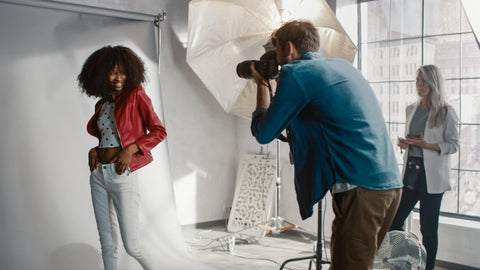- Lightroom Presets
- Mobile Presets
-
Photoshop
-
Learn
-
Support
-
Install
- Best Sellers
- Blog
By Lea Hartman on | No Comments

When it comes to composition, I’m sure you’ve heard all about the rule of thirds. Maybe you’ve even gone so far as to learn a bit about the golden ratio. But one area of composition you may not have heard discussed as heavily is the use of leading lines. This less heralded gem is one of my favorites!
What are leading lines in Photography, you ask? They’re lines within the frame of your image that “lead” the viewer’s eye to a specific portion of the frame. It could be a sunset, a building, a flower, or a portrait. Either way, the eye will follow it without thought. It’s a way of guiding the viewer’s eye exactly where you want it to go, much like a lit runway does for an airplane in the dark of night.

Imagine that your kiddo is learning to ride a bike on the sidewalk and you want to document this milestone. Would you stand in the grass and take a profile shot as they passed by? Or would you stand either directly in line behind or in front of them so that you could capture them in all their glory as they sail down the sidewalk?
Chances are, you’d choose the latter without giving it much thought. Why is that? It’s because the human eye is naturally drawn to leading lines, in this case, the sidewalk.
Leading lines can be found in many locations and be comprised of many different materials (i.e. fencing, bridges, boardwalks, pavement, dirt roads, a line of trees, buildings, streets, shadows, rivers, shorelines, waves, waterfalls, a row of lamp posts, etc). You just have to keep an eye out for them.
Utilizing them will automatically help to create a compositionally stronger, more interesting photograph.

In addition to using leading lines to draw the viewer’s eye directly to the subject, I also love to position a subject between two leading lines to add an element of symmetry to an image. (I’m kind of a symmetry freak). Two parallel lines that lead to the subject of the image will probably have the greatest impact. This also creates a greater sense of depth.

Do leading lines have to be straight? Not at all. A curved line is still a line! And curved or straight, as long as the line is leading where you want the viewer’s eye to end up, it will be an effective use of leading lines.

Lines can be horizontal, diagonal or vertical. Each implies a different mood. Horizontal lines lend to a feeling of security and tranquility. Diagonal lines give more of a feeling of movement and energy. Vertical lines emphasize height and convey a sense of power or strength.
When coupled with other principals of composition like the Rule of Thirds, leading lines can make an even more compelling statement.

The placement of leading lines within the frame is another factor to consider. Knowing that the human eye sweeps from left to right and bottom to top means that a line leading from the lower left corner to upper right is the most natural progression and will give the viewer a sense of calmness.
But a line that sweeps from the upper right toward the left may induce a feeling of unnatural danger. This allows you to partly dictate the emotion of the viewer, simply by adjusting the composition of your shot! Which of us wouldn’t like to have that kind of control over our work?

When composing your shot, you can often times achieve a better composition by identifying the leading lines, positioning yourself to take the shot and then waiting for your subject to enter the frame. This is especially true of street photography but I use this technique with my children as well.
Learning to recognize and incorporate leading lines is is also paramount for adding interest to your smartphone images. You may not be able to control the exposure triangle when you pull out your phone, but mastering composition can elevate an iPhone shot to something really special. It’s the number one tool to have in your belt when your mobile device is your camera of choice.

So, get out there TODAY and start finding some leading lines to incorporate into your photography!
Do you have any questions or comments about using Leading Lines to Compose Better Photos? Leave us a comment below - we would LOVE to hear from you! And PLEASE SHARE this post using the social sharing buttons (we really appreciate it)!




Lea is a self taught natural light photographer currently based out of North Carolina. Happily married for 14 years, she and her lover boy are raising three crazy kids wherever the army sends them. She's addicted to coffee, jamberry and her dog, Huxley.

Comments